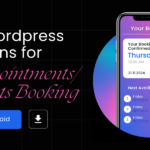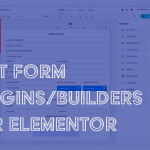Boost your Shopify store’s performance with our comprehensive Shopify SEO checklist, guiding you to increase visibility and drive more sales.
It is vital for individuals who run an online store on Shopify to attract more visitors and increase sales. Optimizing your Shopify store for search engines can help increase the visibility of your website, attract more focused traffic, and eventually increase sales. In this blog post, we’ll go through a complete Shopify SEO checklist that will teach you all you need to know about optimizing your online store for search engines and improving the performance of your website. This checklist will help you take your Shopify store to the next level, whether you’re a seasoned e-commerce business owner or just starting out.

SEO for Shopify
Shopify SEO refers to the process of increasing the visibility of your Shopify store in search engine results. You would like to appear as high as you possibly can as consumers search for the things you sell in order to attract traffic. Typically, e-commerce SEO include optimizing your headlines, product descriptions, meta data, internal link structure, and navigational structure for search and customer experience.
Each product you offer should have its own page on search engines. When customers need information, products, or services, they utilize Google to find them. They seek alternatives, suggestions, comparisons, and other information to assist them in making better judgments. SEO for Shopify aids in the optimization of material that is valuable to the user, and in turn, the user may be expected to convert into a lead, and ultimately into a customer.

Following the completion of the Shopify store, the next critical stage is SEO. Even if no SEO booster is used, a well-optimized Shopify website may produce a large quantity of organic traffic simply by being preferred in Google search results. To put it another way, how well your search engine optimized Shopify store performs on online indexes frequently determines the organization’s success or failure. Despite the fact that there are several internet research tools, the majority of individuals will always start with Google.
You should utilize the best Shopify SEO tools for your store that are Google-compatible, can track popular terms, and provide keyword optimization ideas. Regardless of the fact that it necessitates more effort and labor than other paid advertising tactics, this is one of the greatest web-based business promotion channels. Despite the fact that Shopify has already supplied a number of outstanding SEO-friendly tools, there is still much space for development. Many SEO-related difficulties may be recognized and fixed more simply with proper SEO strategies and Shopify applications. Let’s take a look at the Shopify SEO checklist that can help your business rank better on search engines.
How to improve SEO
By following these steps, you may enhance the SEO of your Shopify store and attract more targeted visitors to your website, resulting in increased sales and company success.
- Optimize the site structure, including the URL structure, navigation, and internal linking.
- Conduct keyword research to uncover keywords and phrases that are relevant to your target audience.
- Improve the quality of your content, including product descriptions, titles, and meta descriptions.
- Ensure that technical SEO is in good working order, including improving site performance, employing structured data, and correcting crawl issues.
- Increase the number of high-quality backlinks to your website through link building and social media marketing.
- Use social media to generate visitors to your Shopify business.
- Monitor and assess your store’s SEO performance on a regular basis, making changes as needed to boost search engine results.
This infographic gives a detailed and easy-to-follow approach to optimizing your Shopify store for search engines, ensuring optimal exposure and organic traffic. It has been created to provide a simple path for increasing your ecommerce store’s organic rankings and attracting more qualified consumers.

For Your Successful Ecommerce Store, Use This Shopify SEO Checklist!
1. Select SEO-Friendly Shopify Theme
Choosing the proper theme for your Shopify online store is a vital choice that might effect your website’s search engine optimization (SEO) performance. It is critical to choose a theme that is both aesthetically attractive and SEO-friendly. A theme with optimized code and structure will speed up your website, making it more user-friendly and search engine-friendly.
It’s also critical to seek for themes with configurable meta tags, header tags, and alt tags, as these boost your website’s exposure in search engine results pages. You may establish a solid foundation for your store’s online exposure and success by choosing an SEO-friendly theme.
Effective coding methods may also help SEO significantly. Schema markup may be used to improve featured snippets, which display information in distinct boxes on Google’s search results. Using a Shopify theme to automatically add product schema, FAQ snippets, video object snippets, breadcrumbs, and other markup to your site will increase the likelihood of your website being listed as a featured snippet on Google. It is crucial to emphasize, however, that there are no promises in this respect.
How to Choose a Shopify Theme:
Step 1: Click the Themes link in the left column of your Shopify dashboard.
Step 2: Click the “Upload” link if you already have a pre-designed or paid theme installed on your computer. You may also browse hundreds of different theme alternatives by clicking “Visit Theme Store.”
Step 3: Return to the Themes menu and click Actions > Publish to activate a newly added theme to your collection.
How to Choose an SEO-Friendly Shopify Theme
- Use an uncomplicated and basic theme. This not only improves the appearance of your page to visitors, but it also means that there are less items that might slow down page loading speeds.
- Premium themes offer a more refined appearance and are more optimized.
- Select a mobile-friendly responsive theme.

2. Perform Image Optimization
If the photos in your Shopify store are optimized, it may run quicker. Images may be found in every internet retailer. In addition to product photos, you may import blog article images and headers into your Shopify store. Your Shopify store will run slowly if you do not optimize it. Unoptimized photos, in contrast to optimized images, are huge, bloated files that need clients to wait longer to download.
You may improve the performance of images by resizing and cutting them. Instead of utilizing a picture that is too large, crop and decrease it to the suitable size. A reduced file size usually results from a smaller dimensional size. Shopify will automatically compress your photos. One of its built-in features is picture compression. Shopify can also convert them to WebP format. However, you should resize and crop your photographs before submitting them to ensure that they load as quickly as possible into your Shopify store.
Steps for Updating Image ALT Text
Step 1: In the left-column navigation, select the page you wish to alter from the “Pages” or “Products” menus. You can also start a new page.
Step 2: Click the “Insert Image” button within the Content Box.
Step 3: Copy and paste your phrase into the “Image alt text” box of a picture from your device or the list of Uploaded Images.
Image Optimization Suggestions
- If you offer items with model or serial numbers, include them in your alt attributes.
- GIFs are ideal for basic pictures with few colors on a website. They are, however, not necessarily as desirable for huge and intricate images.
- Reduce the file sizes of your thumbnails to the greatest extent possible. The cumulative influence of your thumbnails will have a significant impact on your page load time.
3. Optimize URLs for Your Shopify Store
URLs tend to be less significant for SEO purposes. Search engine robots can benefit greatly from improved URLs in terms of finding, crawling, and interpreting your page. Legitimate URL structures aid in the indexation of your site. On the other side, efficient URLs can improve users’ experiences and comprehension of the page’s content. If your audience has a positive experience on your website, they will remain longer. It improves your chances of converting them into customers.
Confusing URLs are an issue for the great majority of internet shops, preventing them from being identified and recognized. Creating proper URLs is a critical component of search engine optimization. You will need to improve on your page permalinks and slugs. As a result of imprecise URLs in many businesses, Google and even buyers become confused about the things they are purchasing. Make it simple to utilize. The purpose of search engines is to provide the greatest possible user experience. Your URLs have a greater chance of ranking if they are simple to grasp. Your chances of showing higher in the SERPs will improve if you incorporate keywords in your URLs. URLs should be no more than fifty characters long.
Update URL Procedures
Step 1: To change the URL of an existing page, choose it from the “Pages” option in the left column, or click “Add Page” to create a new one.
Step 2: On product pages, the option “Edit Website SEO” is also available. The URL field is located underneath the title and meta fields.
URL Optimization Suggestions
- Only use a specific term at the start of the URL.
- Shorter URLs perform better, so avoid long and crowded ones.
- Fix URL crawl errors
- There should be no punctuation marks or special characters; just numbers and letters should be used.
4. Update Meta Descriptions As Required
A meta description is an HTML meta tag that is used to describe the content of a webpage. It appears under the title and URL of every search engine result. By promoting the value proposition of a website and persuading people to click on it, a meta description acts as a little advertising. Meta descriptions have the potential to boost your organic CTR (Click Through Rate), which is the proportion of individuals who click on a search engine result page after seeing it.
However, they have no direct impact on your SEO. Marketers use a statistic known as CTR to determine if an advertising, search result, or portion of a page is relevant. Even if you do not rank top, a higher CTR indicates that you will receive more visitors.
Your unique meta description, which should be between 150 and 155 characters long, should include the term you wish to target. Search results will emphasize your meta description if it contains the precise term the user is looking for. It works similarly to a little advertising in that it seeks to attract users to click on your page in the search results.
How to Update Metadata
Step 1: In the left column of your Shopify dashboard, click “Preferences” to alter the meta description of your homepage.
Step 2: Fill out the “Homepage meta description” box.
Step 3: From the left column, choose the page from the “Pages” menu, or click “Add Page” to create a new page, and then select “Edit Website SEO” to change the information.
Metadata Optimization Suggestions
- Secondary keywords or synonyms for your core keyword might be included in your meta description.
- The majority of meta descriptions have a character limit of 150 characters. Make good use of it.
- Include the page’s primary selling points in the meta description, such as special product features, discounts, or reviews.
5. Setup Google Analytics for Your Shopify Store
You can efficiently monitor users, potential clients, and anybody else who visits your website if you employ tracking technologies. You’ll be able to watch everything your visitors do on each page, including where they click and how long they spend on each part. This information considerably aids the process of enhancing and simplifying the user experience. This is critical for your search engine results since search engines are emphasizing giving users with the greatest possible experience. Google Analytics is one of the most important tools you can use on your website to collect more data and make better business decisions.
Google Analytics is used for more than simply site tracking; it can also track the orders and revenue generated by your online business. Shopify reports should be combined with Google Analytics. It may be immediately incorporated with your Shopify store. Google Analytics and Shopify reports provide a thorough view of how your shop is satisfying client demands. Then you’ll know how to improve your website to keep your clients pleased. With the information provided in Shopify’s professional reports, you will be able to deliver a lot more personalized service.
How to Connect Shopify to Google Analytics
Sign in to Google Analytics first. Click “Admin” and then choose the appropriate account from the account column.
Step 2: In the Property column, click the “Create Property” button. Give the property a unique name.
Step 3: Click the “Create a Universal Analytics property only” button. Choose the appropriate options and press the “Create” button.
Step 4: Make a duplicate of the Universal Analytics property.
Step 5: Navigate to “Preferences” under “Online store” in the Shopify admin.
Step 6: In the Google Analytics section, put the copied Universal Analytics property into the account box and press the “Save” button.
How to Use Google Analytics in Shopify
- By accessing your Google Analytics dashboard on a regular basis, you can keep track of vital SEO indicators such as Organic Search Traffic, Keyword Rankings, Referring Domains, and Organic Clickthrough Rate.
- Also, connect your store to Google Search Console. It may be used to identify crawling mistakes, accessibility concerns, and a myriad of other important information for the performance of your organic search.
6. Write Engaging Blog Posts to Support Your Store’s Brand
Create blogs that respond to user searches. Consider the user’s aim, as well as their specific desires, requirements, and intent, while developing content ideas. For example, if a customer searches for one of your items and you give them with a relevant blog for that product, you will meet their need, which we may presume is to buy or learn more about your product. On a regular basis, only publish high-quality, unique, and current information. Post relevant, high-quality movies and photos. Check that each of these pages has the appropriate keyword(s), internal and external links, keyword density, and structure.
Give your audience possibilities they were not aware of. Regardless of whether your product is a component of that solution, prior to generating a sale, focus on supporting the reader. Analyze your competitors and develop 10 times better content for each targeted term than they do. It’s crucial to provide helpful material, but don’t just throw it everywhere. Keep in mind that your website’s content should be as smooth as feasible. It is also advised to provide a range of information for the same topic cluster. As a result, both people and bots will regard your website as the authoritative source in that specific sector.
How to Write a Shopify Post
Step 1: Navigate to Blog Posts in the Online Store.
Step 2: Click on “Create Blog Post.” Shopify automatically hides new blog postings, so be sure you choose “Noticeable” before publishing.
Step 3: If you don’t see your blog on the main page, pick the menu where you want it to display in the left column by selecting Navigation under Online Store. After that, click “Add Menu Item” to enter your blog’s URL.
How to Optimize Your Site’s Blogs
- Post fresh blog entries, both short and long-form, to your Shopify site on a regular basis.
- You may boost the value of your articles by sharing them on social media.
- Click the “Edit Website SEO” link on each page of a blog entry to create a keyword-optimized title, meta description, and URL slug.
7. Use the Right Header Tags
The H1 element should only be used once per page since it aids Google in understanding the structure of the page. Check that your H1 includes the required term. There should only be one H1 element in your material, which acts as the major heading. Pages containing numerous H1 tags will be flagged by your Site Audit tool. The most typical cause is that the page’s primary heading and logo are surrounded by many H1 tags. The primary goal keyword for a page should be remembered for H1 labels, so ensure that you are labeling correctly.
Subheadings should appear in at least one of your H2 tags, and your target keyword should appear in the others. Examine whether your subheadings can include LSI (Latent Semantic Index) keywords. Subheadings can be used to separate information and make pages simpler to read. Each page may have several H2 tags.
Modifiers such as “2023”, “quick”, “free”, and “review” might help you rank higher for long-tail variations of your target term. Some common internet words for relaunched blog articles include “the current year”, “the best”, and “updated”. These changes may also improve your click-through rate.
How to Use Title Tags
Step 1: In the left column of your Shopify dashboard, click “Preferences” to edit the title tag of your homepage.
Step 2: Fill up the “Homepage title” box.
Step 3: From the left column, choose the page from the “Pages” menu, or click “Add Page” to create a new page, and then select “Edit Website SEO” to edit the title tag for any other page.
Tips for Improving Title Tags
- Make certain that your page’s principal keyword appears in each title tag.
- Include engaging calls to action alongside title tags to boost clicks.
8. Optimize Your Store Homepage
A solid method for homepage SEO is to focus on site visitors and make it apparent to them what your website is about. It also applies to your Shopify store. your not only helps people understand your business, but it also informs Google about your site, which boosts the SEO of your page and your shop overall.
The objective of your homepage should not be to achieve good rankings for your top five keywords. Instead, create pages specifically for those keywords and focus on what the user will expect to discover there. It should also function as a handy starting place from which to simply traverse the rest of your website’s pages.
The ideal keyword for which you want your homepage to rank is your brand name. When customers search for your company online, it simply makes sense to lead them to your greeting page. It’s an excellent fit because your homepage is where most visitors will discover about your business. This makes ranking your homepage for your brand name easier and more natural.
How to Optimize Your Homepage
Step 1: To access your Themes menu, navigate to “Themes” under “Online Store “.
Step 2: To add a new element, click the “Customize” button next to your existing or desired theme. Select the “Add section” option. You may add additional high-quality banners or photos, or just select “Rich Text” to add text to a section.
Step 3: Arrange your pieces in any order you choose by clicking and dragging them up and down the left column with your mouse.
Tips for Optimizing Your Homepage
- In the opening part of your homepage, include a compelling call to action.
- The major keywords should be included in your homepage’s headings and descriptions.
- To make your writing simpler to read, divide it into pieces.
- On your homepage, include links to related articles or blogs.
9. Optimize Your Shopify Store for Mobiles
Google stated in 2010 that the speed of a website is now an acknowledged ranking criteria. They also announced that mobile-first indexing will be adopted and that mobile page speed results would be utilized starting in 2018. Google will rank and index your store higher on mobile devices than on desktop computers in the future. As a result, your mobile-friendly website must load swiftly and seamlessly. Fortunately, Google has created a great tool for evaluating your mobile page speed and, if necessary, making recommendations for improving performance.
Smartphones are used by over 6.5 billion people globally. In addition to chatting online, people today take classes, transfer money, read websites, and even purchase online.
If your website takes too long to load or does not perform properly on mobile devices, you risk losing a lot of prospective clients. However, due to AMP, your website may now be optimized for mobile devices.
How to Optimize Your Shopify Store for Mobiles
- Step 1: From your Partner Dashboard, choose Apps. Choose the app.
- Step 2: Click the “App Setup” button.
- Step 3: In the Embedded program area, click “Manage”.
- Step 4: Select “optimized loading for all users on live stores” from the Optimize loading on mobile menu.
Tips for Mobile Store Optimization
Use responsive designs to ensure that your business loads quickly on mobile devices.
Use tools like “Google PageSpeed Insights” to test mobile usability.
There are several tools available in the Shopify shop that may assist you in creating AMP web pages to boost mobile user experiences.
Other Search Engine Optimization Best Practices for Your Shopify Store
- If you use LSI (Latent Semantic Index) keywords in your content, Google will fully comprehend the point and subtopics associated with your target term, allowing you to rank better.
- A content audit is a good approach for assessing which pieces of material are adding value and which are not.
- Backlinks from high-authority domains indicate to Google that your page and website are a source of high-quality content. Partnerships with other high-quality websites can help enhance page rankings.
- Check your website for broken links on a regular basis, and if you find any, either update them or redirect to fresh information.
- Many applications are available in the Shopify shop to help you optimize your store for higher rankings and lead conversions. Avada – SEO: Image Optimizer Page Speed, Booster Apps – Booster SEO Plus Image Optimizer, and Hextom – Bulk Image Edit SEO are a few examples.
Conclusion
The Shopify SEO checklist provided above may be used to increase organic traffic, sales, and conversions for your Shopify business. The SEO sector is ever-changing. If your Shopify store is to continue expanding, it must adapt to the changes. Each of the aforementioned tactics has been shown to be resistant to changes in Google’s algorithm. An SEO checklist that can stay up with these algorithmic changes and ensure the growth of your Shopify store is essential, and our Shopify SEO checklist can assist you with that.
FAQs- Shopify Seo Checklist
Q 1. What is the significance of SEO for Shopify stores?
SEO makes your website more visible to search engines, which promotes traffic and revenue. SEO should not be overlooked in today’s digital environment.
Q 2. Can small-scale Shopify stores rank on Google’s first page?
Small Shopify businesses may obtain first-page Google results by constantly providing high-quality content for a term with minimal competition.
Q 3. How can I boost organic traffic to my Shopify store?
Follow the Shopify SEO checklist and other recommended practices listed above to enhance organic traffic to your Shopify store.











